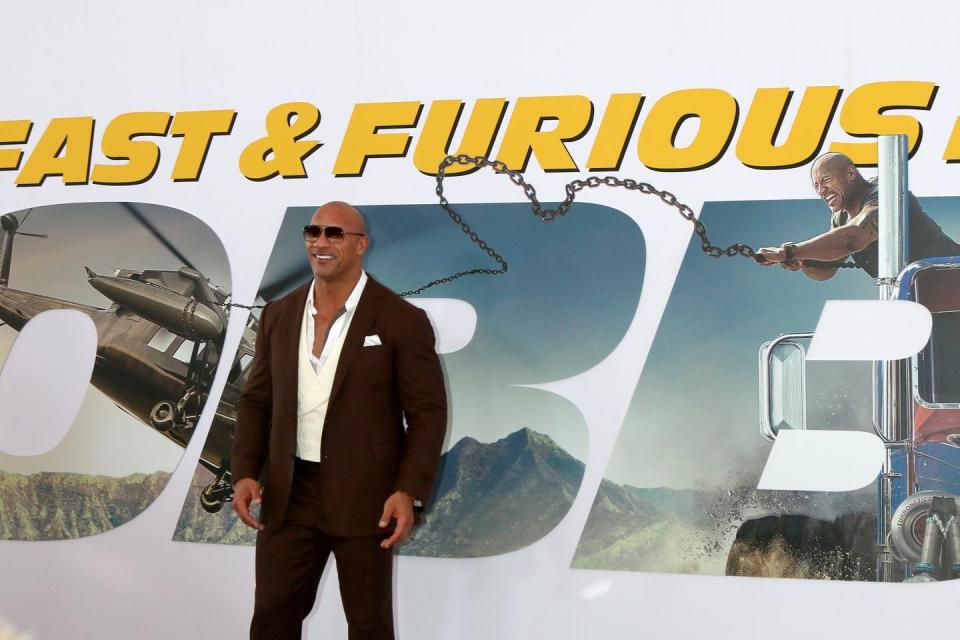Fast & Furious 9: The spectacular melodrama is exactly what a return to cinema needs

As movie theatres reopen across North America, there may be no better way to celebrate than enjoying the supercharged velocity and furious feel-good bromance of F9: The Fast Saga, directed by Justin Lin.
Originally slated to be released in April 2020, the film has faced several delays that have unexpectedly set the perfect stage for a post-pandemic theatrical spectacle.
The film was released June 25 in the United States and in Canada, but it is already No. 4 on the list of highest-grossing films of 2021, an impressive feat for a franchise that has been racing for 20 years.
Starting in 2001 with Rob Cohen’s The Fast and the Furious, the film launched one of the most successful action franchises to date. Critics panned its lack of story, undeveloped characters and strikingly uninspired dialogue. But of course these elements do not diminish the appeal of the franchise for both domestic and international audiences.
Fast cars, elaborate stunts
The revved-up spectacle of the films has accelerated over the years: higher production budgets, increasing star power, escalating special effects and stunt choreography. The storyline also shifted gear into more elaborate espionage narratives with the introduction of Luke Hobbs (Dwayne Johnson) in 2009’s Fast Five.
There are, however, constants that define the franchise’s attractions: high velocity chases, visceral fist fights, elaborate heists and violent shootouts.
Arguably the films work because of their single-minded insistence on escalating levels of excessive action: what began with street racing and a low-level heist of DVD players builds to an icebound car versus nuclear submarine chase in The Fate of the Furious that is one of the most delightfully ridiculous set pieces in the history of blockbuster cinema.
The franchise is, like the cars it celebrates, on nitrous oxide — it offers high-geared and explosive spectacles that are as empty as a NOS canister after a street race.
It goes without saying that cars are integral to the franchise’s original appeal. Like other mechanically focused super franchises, the Fast and Furious films pay fetishistic attention to machines — their movements, their sounds, their shiny and reflective surfaces. However, unlike the Transformers films, for example, the Fast & Furious films exist on a human scale, even in the later films.
Chosen family values
The human element is the core of the franchise’s oversimplified emotionalism that is a main attraction of the franchise, even, and perhaps especially, when it is parodied for its ridiculous excess.
Playing to multigenerational audiences, many of whom were not born when the first film played in theatres, each instalment is more spectacular than the last.
But the latest also foregrounds the emotional element that led to the franchise’s initial success: familial bonds of kinship. The focus on kinship both on and off screen allows the films to swerve around narrative logic and whiz past characterization. This frees up space for the franchise’s signature excesses, both in terms of disorienting velocity (fast!) and melodramatic feeling (furious!).
Family is quite simply the moral centre of the franchise — something appreciated by fans.
It is also something essential to the marketing of F9, where family, as with everything else in the franchise, becomes increasingly extravagant, with resurrections and long-lost brothers returning to exact vengeance.
But bromance is too glib a term to explain the network of kinship bonds that propel the franchise. The bonds of chosen family carry over into the celebrity discourse around the films.
This is most obvious in the opposition between relationships involving (the aptly named) Vin Diesel — who plays Dom Toretto — and two of the other actors in the franchise. Diesel’s brotherhood with the late Paul Walker was made stronger by the circumstances of Walker’s death, while the friction between Diesel and Dwayne (The Rock) Johnson (Luke Hobbs in the films) evolves into gossip about offscreen sparring between the two stars.
The diversity of the cast
The celebrity factor of the films is also notable for promoting diversity, an element of the films that has proven to be a key attractor for international audiences.
These films do not present the white worldview of James Bond or Jason Bourne and that is crucial to their success. This diversity gains impact through the films’ family-first worldview that celebrates the emotional framework of chosen familial bonds shared by a group of outsiders.
And this appeal to outsider status is furthered by its connections to celebrity. The stars of the series are not A-list actors known for Oscar-worthy great roles, although some of these make cameo appearances. Instead, the recurring actors are recognizable celebrities from various performance backgrounds who may be high-grossing but do not belong to the Hollywood elite.
This outsider ethos combines with the idea of chosen rather than inherited families, to set up an ethic so powerful that it renders story details irrelevant.
Unlike other successful franchises, Fast & Furious is its own created world: it is not an adaptation or continuation of pre-existing cultural products such as the Marvel Universe. This freedom creates refreshingly simple narrative and character arcs: a consistent group of characters gather around an event — heist, terrorist plot, hijack, race — that strengthens their emotional bonds.
Whatever the action, the franchise’s core value system remains unsullied. There is a straightforward and nostalgic sincerity that defines these characters and, in an era of more complex puzzle films, this simplicity has a pull that should not be underestimated.
F9’s supercharged spectacles are lodged in a clearly defined melodramatic universe where good and bad are clear-cut, emotion prevails over logic and family is foremost. The spectacular torque of the films and their sheer ridiculousness, notable even in the absurd titles of the instalments, is one of the franchise’s most basic appeals.
At heart, these films are melodramas and this is precisely what many are looking forward to in the pumped up spectacle of F9.
This article is republished from The Conversation, a nonprofit news site dedicated to sharing ideas from academic experts. It was written by: Lisa Coulthard, University of British Columbia and Lindsay Steenberg, Oxford Brookes University.
Read more:
Lisa Coulthard holds a Social Sciences and Humanities Council of Canada Insight Grant studying the fight scene in cinema. Lindsay Steenberg is a collaborator on this grant.
Lindsay Steenberg does not work for, consult, own shares in or receive funding from any company or organisation that would benefit from this article, and has disclosed no relevant affiliations beyond their academic appointment.



